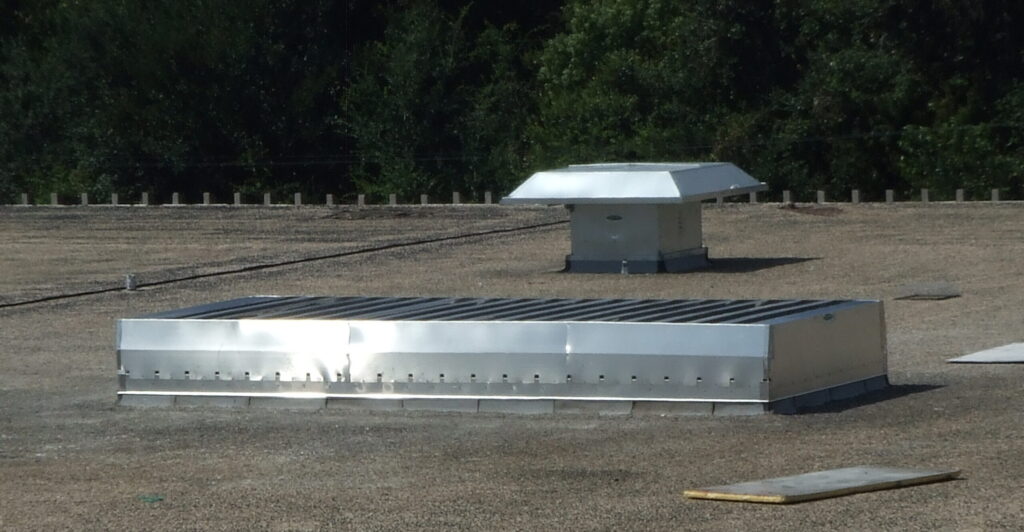Moffitt Axial Fan + Moffitt Natural Ventilation
The Moffitt axial fan is the keystone of any powered ventilation system. Our axial fan is effective and very versatile. They can fit into a limitless number of configurations. Finally, when they are used in conjunction with a natural ventilation system, they can be a powerful, low-cost cooling solution.
How Does an Axial Fan Work?

An axial fan works by pushing air at an increased velocity. The rapidly spinning fan blade blows air at an increased rate. The air moves parallel, or axially, to the unit in which the blades rotate. The propeller creates a pressure difference between the two sides of the fan. This creates a suction effect that helps retain the flow of air.
The fan blade’s movement creates a breeze. This creates an evaporative cooling effect. As a result, the skin feels cooler, and hair blows more freely. Most importantly, this helps people feel cooler and more comfortable.
How Does Natural Ventilation Work?
Natural ventilation utilizes the simple principles of “heat rises”. This means that hot stale air evacuates from a factory or workshop through a roof vent. As a result, incoming fresh cool air replaces it. Cold air then enters the building through intake slots set close to the ground. It then gets warmer as it moves around the machines, people, lighting and heat elements. Finally, when it floats right out of through ridge vent or natural ventilator at the ceiling.
Natural ventilation is a fantastic way to cool a space without using any energy. However, in certain situations, natural ventilation may not be enough.
Moffitt Axial Fans and Natural Ventilation
Ventilating naturally, with wall louvers and ridge vents, is a great way to cool a space while also reducing the building’s carbon footprint. In some instances, however, natural ventilation may not be sufficient. As a result, a Moffitt axial fan can assist with the cooling process.
Industrial axial fans can assist with natural ventilation through spot cooling, warm air exhaust, or for intake air. These methods all involve directing the extra air flow to specific places in a facility and supplementing the natural flow of air.
For instance, a Pressure Gravity System® utilizes wall fans to bring air into the building at a higher pressure. This makes for a rather stronger breeze and helps the warm air exhausting through the rooftop ventilator evacuate at a greater rate. Many of natural ventilation’s cost savings benefits are achieved in this hybrid system. As a result, the building achieves the maximum benefits of a powered ventilation.
Furthermore, with improved axial fan energy efficiency, they are becoming less expensive to operate all the time. They can be made to do more with less energy and can be built to meet the exact needs of a space. Seems like more and more companies are seeing the benefit of reducing waste all of the time. Natural ventilation is probably one of the most effective ways to do that for your natural ventilation system.
Choosing the Right Moffitt Axial Fan
There are many varieties of the Moffitt axial fan. Finding the right one for your space in question is the key. For instance, sometimes you’ll need a belt driven fan motor while other times you’ll want a direct drive one. Convenience, ability to properly maintain, and cost, are all important factors in the decision-making process.
It can be a challenge to choose the right fan for your specific facility. Consult a ventilation design expert to get the experience you need. Finding the right balance between powered ventilation and natural ventilation can make the difference between a warm facility and a comfortable one. Call the team at Moffitt today. Get your Free System Design and find the right ventilation solution for your facility.
